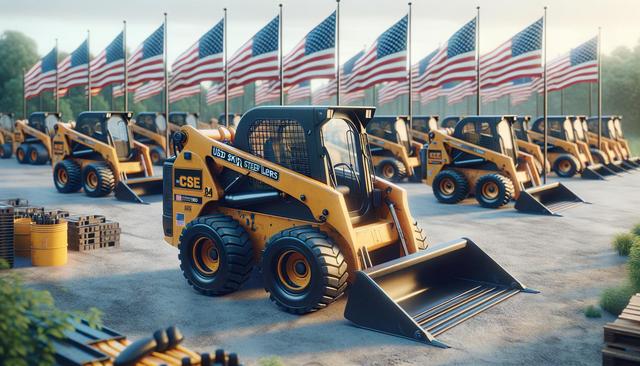Why Choose a Used Skid Steer Loader?
For many small to mid-sized businesses, purchasing heavy equipment new isn’t always feasible due to budget constraints. This is where used skid steer loaders come into play. These compact machines are known for their versatility and efficiency on job sites, and buying them pre-owned can significantly reduce upfront costs. Whether you’re clearing land, moving materials, or grading surfaces, a well-maintained used skid steer can perform reliably while keeping expenditures in check.
Used models often retain much of their original functionality and durability, especially when sourced from reputable sellers. It’s not uncommon to find machines with low hours of use that have been well serviced throughout their lifespan. For companies looking to scale operations without overextending financially, a used skid steer loader presents a practical and economically sound choice.
Factors to Consider Before Buying
Before investing in a used skid steer loader, several critical factors should be evaluated to ensure you’re making a sound purchase. These considerations help determine not only the machine’s current condition but also its suitability for your specific needs. Key factors include:
- Operating hours: Lower hours typically indicate less wear and tear.
- Maintenance history: Regular servicing is a sign of responsible ownership.
- Hydraulic system condition: Check for leaks and smooth operation.
- Attachment compatibility: Ensure the loader can accommodate the tools you need.
- Tire or track wear: Replacements can be costly, so assess current condition carefully.
It’s also wise to inspect the frame and lift arms for signs of damage or excessive stress. Consider bringing a mechanic or technician with you to help evaluate the machine, especially if you’re not experienced in equipment inspections.
Where to Find Reliable Used Skid Steer Loaders
There are multiple avenues for finding used skid steer loaders for sale, from online marketplaces to local equipment dealerships. Each option comes with its pros and cons. Dealerships often offer machines that have been inspected, serviced, and possibly warrantied, providing an added layer of confidence. Online platforms, on the other hand, can offer a broader selection and competitive pricing.
Some common sources include:
- Construction equipment dealerships
- Online auction sites and marketplaces
- Rental companies selling off older fleet models
- Local classified ads and industry forums
Regardless of where you buy, always request detailed photos, service records, and, if possible, schedule a physical inspection or trial run before finalizing the purchase.
Benefits of Buying Used Over New
Opting for a used skid steer loader brings several advantages beyond just cost savings. One of the most significant benefits is the immediate availability of the equipment. New machines can sometimes come with long lead times due to manufacturing or delivery schedules, but used models are often ready for immediate use.
Other advantages include:
- Lower depreciation: New equipment loses value quickly, while used models retain value longer.
- More options within budget: You can often afford a higher-spec model used than new.
- Proven performance: Older models have a track record of reliability and functionality.
For businesses operating on tight margins or working on short-term projects, these benefits can make a substantial difference in project planning and execution.
Maintenance and Longevity Tips
To maximize the lifespan and performance of a used skid steer loader, consistent maintenance is essential. Even the most robust machines require regular care to stay operational and efficient. Begin by creating a maintenance schedule based on the manufacturer’s recommendations and the operating conditions your equipment will face.
Key maintenance tasks include:
- Regular oil and filter changes
- Hydraulic fluid checks
- Cleaning and inspecting the undercarriage
- Monitoring tire or track condition
- Checking for software updates if applicable
Training your operators on proper usage and machine handling can also reduce unnecessary wear. Keeping detailed records of all maintenance activities will help in future resales and ensure that any warranty coverage remains valid.






